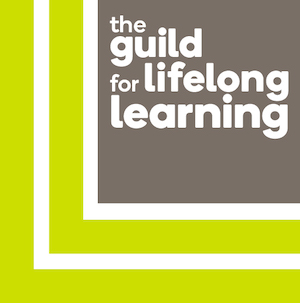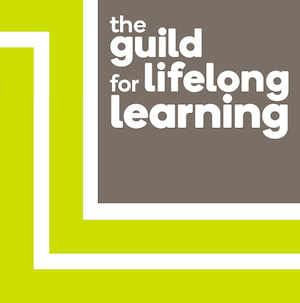Information
29 Apr Saatchi – Fire in the Hold The Rise and Fall of Young British Art
It is a pity that the pop group from the late eighties already had the name “Fine Young Cannibals”, otherwise this group of artists would surely have qualified.
In the past, emerging artists struggled in garrets waiting for patrons to light upon their work and propel them to success. But this group of fine young cannibals whilst still at art school, took charge of their own destiny and invaded the space of the trendy galleries of the West End.
In a revolution from Goldsmith’s college a group of 16 artists led by Damien Hurst not only invaded the territory but moved it geographically to the wastelands and warehouses of Docklands and the East End of London. Like the Refuses of French Avant Guard of the Nineteenth Century they did not wait for recognition of the established art world, but instead revitalised the derelict parts of London with a confidence and chutzpah unseen before even by Pre Raphaelite standards.
They were joined by additional students from other Art Colleges including the Chelsea College of Art and the RCA. Soon names like Tracey Emin, Sarah Lucas, Gillian Wearing, Marc Quinn, Gavin Turc and Jenny Saville were being mentioned around the dining tables of the glitterati.
The evil genius Charles Saatchi, former Thatcher publicist, soon discovered this coterie of fine young things and became their Medici Prince. An art fanatic himself, he literally hoovers up their work, is their biggest fan, biggest collector, biggest patron and biggest salesman. It was a marriage made in East London, and exporting all over the world to galleries and even stately homes such as Chatsworth House.
Experimental, Installation and Conceptual Art became the order of the day. They flammed so brightly and so unpredictably…to crash and burn seemed all too possible…and they did, literally when the Saatchi Momart warehouse full of millions and millions of YBA artwork went up in flames in May 2004. But their success continues in spite of the tragedy with many of them the most sought-after contemporary artists, winners of the Turner prize and seven of them elected as Royal Academicians!!!
They defined the Art of our times as a shark, a tent, heads of frozen blood and an unmade bed.
13 May Raphael
Yes but what did Raphael ever do for us? This seems to echo down through the nineteenth century as Millais, Rossetti, Burne Jones and the rest of the “Brotherhood” rail against the loss of medievalism and knightly chivalry threw in with Excalibur into the lake as Art moved into the Renaissance. What was it that convinced this group of young men to want to go back to the “future”?
This talk will explore the work of a young artist who developed a style of his own and demonstrated a skill in draughtsmanship and painting that was to be emulated for generations after. Raphael learned from his masters, copied other artists and then sought to improve on previous examples with a perfection all of his own. And the irony of a close examination of the work of the Pre Raphaelite-Brotherhood is how often their inventions showed a formulation and completion that was almost Raphaelite in its treatment.
Raphael dies early in life and leaves behind a legacy that would dwarf most other artists. He is the true Renaissance artist, multi-faceted, a polymath and educated in a Humanist court. We know so little about him, he leaves hardly any written history and what we do know comes from his contemporaries and Vasari, whose prose is overworked and whose facts are more inclined to fancy.
His genius is acknowledged when Popes Julius and Leo appoint him as official Vatican Architect. He designs and builds many of the great Renaissance palaces but much of his work does not survive. As Prefect of Antiquities he stops the desecration of the great Roman classical buildings and lays down the guidelines for the recording and preservation of historic architecture.
He breathes life into his religious painting and character into his portraiture.
As a young man he is recognised a“master” and soon develops his own workshop where he is assisted by 50 of the greatest artists of the Renaissance period.
Under the patronage of the Papacy, princes, great merchants, cardinals, and patrons of the nobility he leaves a treasure trove of Buildings, portraits, frescoes and Tapestries.
“Raphael has succeeded in what others always wanted to do.
24 June Donatello
There were three great Renaissance sculptors: Michelangelo, Bernini and Donatello. Of these the possibly the greatest was Donatello in as much as he not only revived the techniques and styles of Greek and Roman sculpture, but he was the seminal innovator of the Renaissance form of sculpture. This alone would guarantee him his place in the history of art, if it were not for his work later in life which anticipates the economy of form of future sculpture in the 20th century and beyond. He is a man of his time and of the future. He is a revivalist, experimenter, and traveller to the future.
A prodigy, he is marked out from an early age as a unique craftsman gaining important commissions for statuary from the age of 21. Apprenticed to Ghiberti, the greatest goldsmith of the day, he becomes proficient in sculpting and become the master of bronze casting.
He becomes a legend in his own lifetime earning high fees and generous to the very risk of his own financial stability. Always just a step ahead of his money problems and heavily dependent upon his friend and patron the princely banker Cosimo De Medici.
His experimentation with the form of relief carving produces some of the finest and most delicate work of the reformation contributing to the tombs of Popes and Princes. His sculptures adorn churches all over Italy and some of the most famous structures in the Renaissance city of Florence.
He was homosexual with a tendency
Contacts
- Chairperson - Frank Vigon
Join this group
Choose a meeting you'd like to attend:
| Time/Place | Price | Sessions | Quantity |
|---|---|---|---|
Mondays at 10:00 | £49 | 9 |

